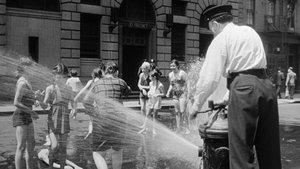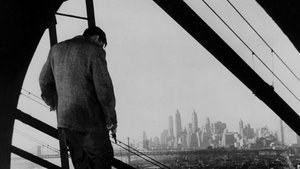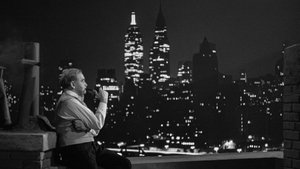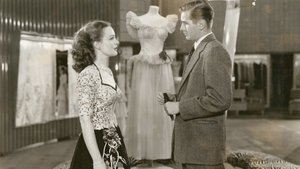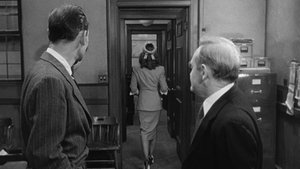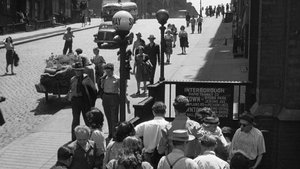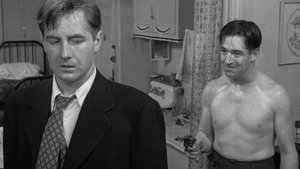Contact: [email protected]
Video Sources 0 Views
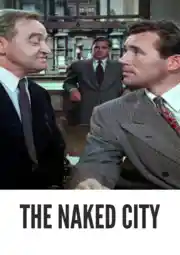
Synopsis
[ez-toc]




Introduction
In the vast landscape of cinema, where black and white once ruled the silver screen, a new trend is emerging – the reimagining of old movies in color. This artistic transformation not only sparks debates among cinephiles but also breathes new life into classic works, inviting audiences to see them through a different lens. “The Naked City Colorized,” a 1948 crime procedural directed by Jules Dassin, stands as a prime example of this phenomenon. In this article, we will explore the historical context of “The Naked City Colorized,” delve into the intricacies of colorization, and analyze the impact of this vivid transformation on a cinematic classic.
Read Media File Transfer Agreement: Terms and Conditions
Read FAQ
The Naked City Colorized: A Brief History
Before we dive into the world of color, it’s crucial to understand the roots of “The Naked City Colorized” in its original black and white form. Directed by Jules Dassin and produced by Mark Hellinger, this 1948 film is a quintessential example of a classic crime procedural. Its narrative prowess and groundbreaking approach to storytelling established it as a noteworthy entry in cinematic history.
Jules Dassin’s directorial vision and Mark Hellinger’s production expertise converged to create a film that captivated audiences and critics alike. The gritty portrayal of crime and investigation in the bustling metropolis of New York City was a departure from the conventions of its time, marking “The Naked City Colorized” as a groundbreaking work.
Initial reception was positive, and the film earned accolades for its innovative narrative techniques and realistic portrayal of crime and investigation. “The Naked City Colorized” became a touchstone for the evolving crime genre and solidified its place as a classic in the film noir canon.
Understanding Colorization of Films
As technology advances, so do the possibilities within the realm of filmmaking. Colorization, the process of adding color to black and white films, has been a topic of controversy and fascination for decades. Techniques have evolved from early hand-painted frames to sophisticated digital processes, offering new possibilities for reimagining the classics.
However, the question remains: does colorization enhance or compromise the artistic integrity of the original work? Some argue that it breathes new life into old films, providing contemporary audiences with a more relatable and immersive experience. On the other hand, purists contend that it erodes the essence of the director’s original vision.
In the case of “The Naked City Colorized,” the decision to colorize the film raises intriguing questions about the balance between preservation and reinterpretation. Can colorization elevate a classic to new heights, or does it risk overshadowing the nuances that made the original a masterpiece?
The Colorized World of The Naked City Colorized
The colorized version of “The Naked City Colorized” offers a fresh perspective on the film’s narrative and visual elements. The decision to add color was not taken lightly, with careful consideration given to the potential enhancements and risks involved.
The 1948 American crime procedural, now bathed in hues that evoke the era’s atmosphere, invites viewers into a different dimension of storytelling. The once stark black and white palette is replaced with colors that mirror the vibrancy of New York City in the post-war years. The question lingers: does this new palette enrich the narrative or distract from the film’s original intent?
Critical reviews of the colorized edition vary. Some praise the enhanced visual appeal, noting that the colorization process breathes vitality into the film’s iconic scenes. Others, however, express reservations, suggesting that the colorized version may dilute the film’s noir aesthetic and compromise its visual impact.
Key Takeaway: The colorized version of “The Naked City Colorized” stands as a testament to the ongoing debate surrounding the reimagining of cinematic classics. Whether it is a faithful enhancement or a departure from the director’s original vision is a subjective judgment that each viewer must make.
The Cinematic Power of Setting: New York City in Films
New York City, with its towering skyscrapers, bustling streets, and diverse neighborhoods, has long been a cinematic muse. In “The Naked City,” the cityscape itself becomes a character, influencing the narrative and establishing a distinctive atmosphere.
Union Station, a prominent location in the film, serves as a backdrop for pivotal scenes, contributing to the film’s sense of place. The choice of specific locales, coupled with Damon Runyon’s portrayal of Irish-American characters, adds layers of complexity to the depiction of Irish cops in the film.
The city becomes a canvas on which the story unfolds, reflecting both the gritty reality of urban life and the cinematic mythology associated with the Big Apple. As we explore the colorized version of “The Naked City Colorized,” it becomes imperative to assess how the addition of color impacts the film’s portrayal of New York City, a character in its own right.
From Film Noir to Colorful Crime Drama
The evolution of film genres is an intricate dance between tradition and innovation. Film noir, known for its high contrast black and white visuals, set the stage for crime dramas like “The Naked City.” However, as the industry transitioned to color filmmaking, a stylistic shift occurred.
“The Naked City” straddles the line between film noir and the emerging genre of colorful crime drama. The film’s original black and white presentation adheres to noir conventions, emphasizing shadows and contrasts. In contrast, the colorized edition introduces a spectrum of hues, challenging traditional expectations associated with the genre.
This shift is not unique to “The Naked City.” It reflects a broader trend in the industry as filmmakers experimented with the possibilities of color. The colorized version of the film becomes a bridge between two eras, inviting audiences to appreciate the stylistic evolution of crime dramas from the noir era to the colorful landscapes of the post-war years.
Key Takeaway: “The Naked City” serves as a cinematic time capsule, capturing the nuances of a genre in transition. As black and white gave way to color, the film evolved, embracing a new visual language while retaining elements that defined its noir roots.
Conclusion
In the sprawling tapestry of cinema, “The Naked City Colorized 1948” emerges as a compelling case study in the ongoing discourse surrounding the reimagining of old films. As audiences grapple with the implications of colorization, it is essential to appreciate both the original black and white version and the colorized edition.
Encouraging viewers to explore these different iterations, each with its unique charm and impact, allows for a more comprehensive understanding of the film’s legacy. Beyond “The Naked City,” there are numerous old movies reimagined in color, each presenting diverse approaches to the delicate art of colorization.
In the spirit of preserving and appreciating cinematic history, it becomes imperative to recognize the significance of both black and white and colorized versions. The evolution of genres, the power of setting, and the debates surrounding colorization all contribute to the rich tapestry of film history.
As we navigate the cinematic landscape, from the shadowy streets of film noir to the colorful narratives of crime dramas, let “The Naked City Colorized 1948” be a guiding light. It beckons us to appreciate the beauty of artistic reinterpretation while respecting the foundations that make these films timeless. In the end, the choice between black and white or colorized is a personal journey, one that allows us to revel in the diverse expressions of storytelling that have shaped the history of cinema.

